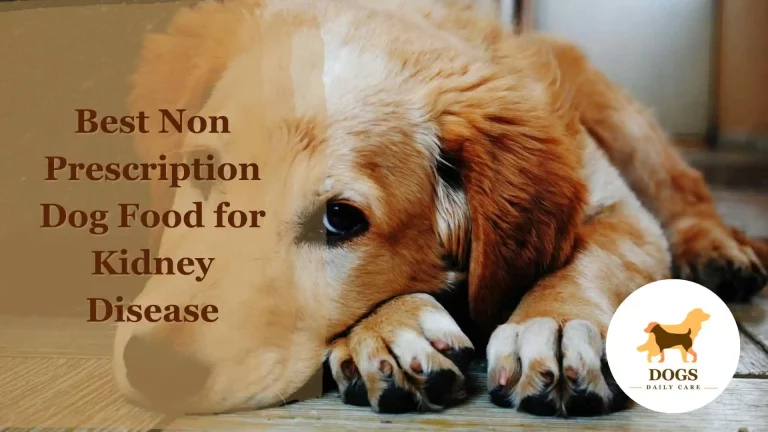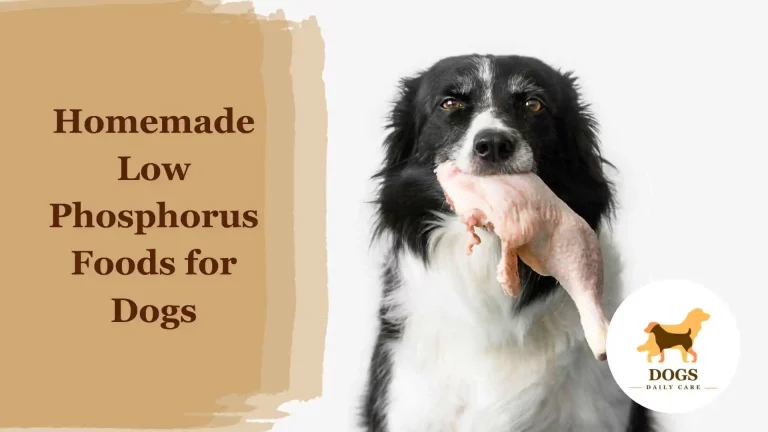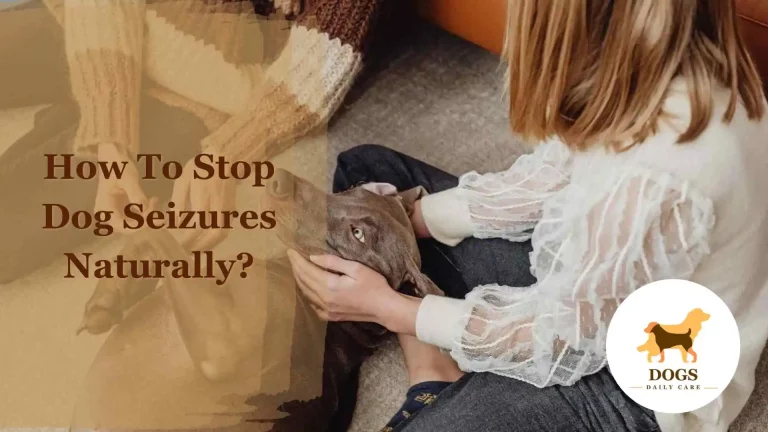How to Toilet Train a Puppy in 7 Days? – A Comprehensive Guide
Toilet training is a crucial step in welcoming a new puppy into your home. It’s not only vital for maintaining a clean and pleasant living environment, but it’s also a foundational aspect of establishing a good pet-owner relationship. As daunting as it may sound, especially for first-time pet parents, the process of toilet training can be simplified and expedited. With a bit of patience, consistency, and a well-structured plan, achieving success in just 7 days is entirely possible.
The 7-day potty training program is designed for busy puppy parents who are keen to get results swiftly, without compromising the well-being and learning experience of their furry companions. This guide aims to provide a detailed, step-by-step approach to fast-track toilet training, making the experience less stressful and more enjoyable for both you and your pup. The keyword to keep in mind is “consistency,” which is the bedrock of any successful toilet training endeavor.
So, if you’re geared up to take on the 7-day challenge and transform your curious puppy into a potty-trained companion, you’ve landed at the right place! This comprehensive guide will navigate you through the essentials, providing practical tips and proven strategies to achieve toilet training success in a week. Whether you have a stubborn or a cooperative puppy, the structured approach outlined in this guide is bound to bring about notable progress, laying the groundwork for a happy and healthy pet-owner bond.
Preparing for Toilet Training

Before diving into the nitty-gritty of toilet training, proper preparation is fundamental to ensure a smooth, hassle-free experience. This phase is all about creating a conducive learning environment for your puppy, gearing up with the necessary supplies, and designating a specific potty area. When done right, these preliminary steps pave the way for a successful 7-day toilet training journey.
Choosing the Right Time for Training
- It’s ideal to begin toilet training when you have a relatively clear schedule for the week. The more time you can dedicate to this endeavor, the quicker and smoother the process will be.
- Starting over a weekend or when you have a few days off can provide a good runway to kickstart this 7-day training program.
- Remember, the early days are crucial as they set the tone for the training, making it essential to start when you can provide undivided attention.
Getting the Necessary Supplies
A Crate
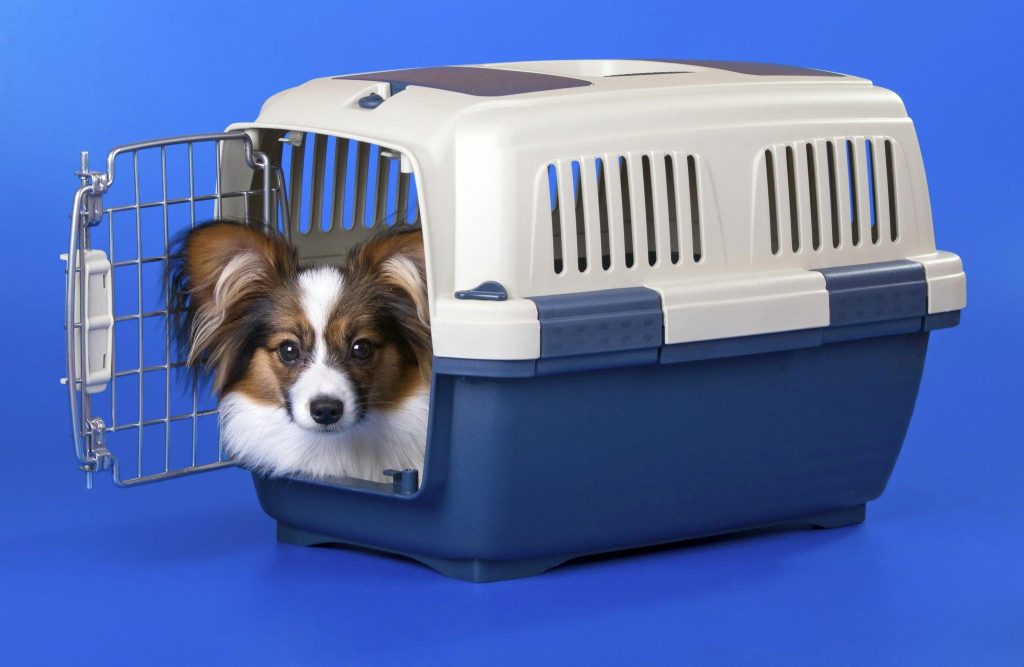
A crate is an invaluable tool for toilet training. It creates a personal space for your pup and helps manage accidents. Ensure the crate is comfortable, well-ventilated, and of the right size – large enough for your puppy to stand, turn around, and lie down, but snug enough to create a den-like feel.
Puppy Pads
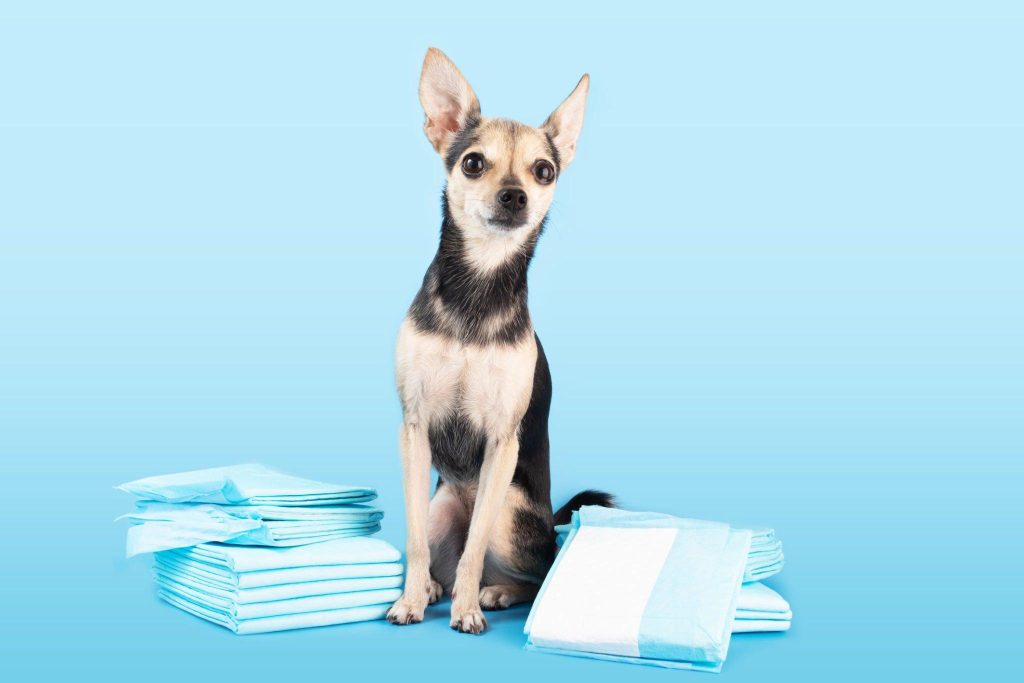
Initially, puppy pads can be helpful, especially during nighttime or when you are not around.
Cleaning Supplies
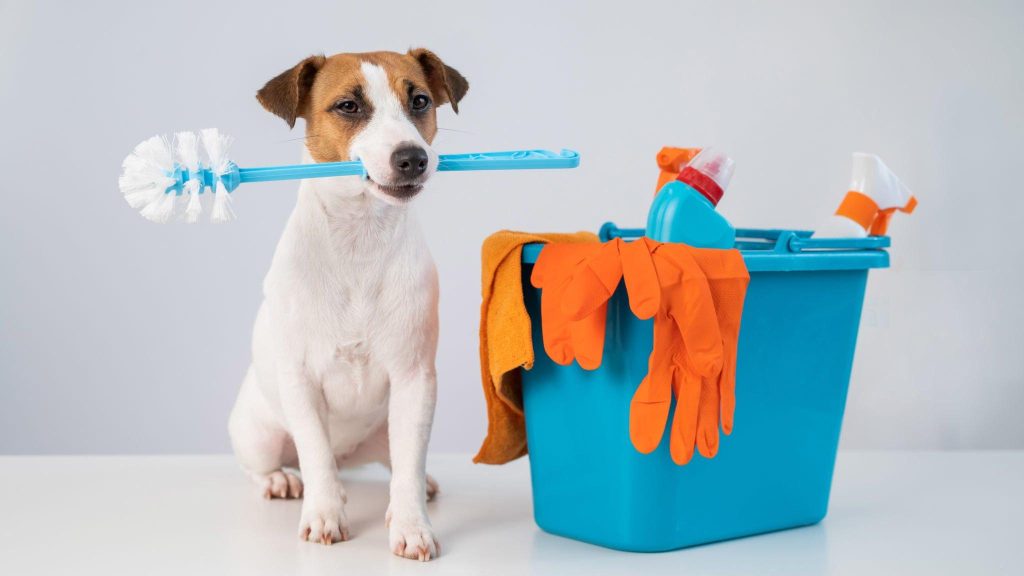
Accidents are bound to happen. Arm yourself with pet-safe cleaning supplies to tackle these situations. An enzymatic cleaner can effectively eliminate odors, deterring your pup from soiling the same spot again.
Preparing a Designated Potty Area

- Consistency is key when it comes to choosing a potty area. Whether it’s a specific corner in your yard or a particular spot on your balcony, make sure it’s easily accessible and distinct from other play or feeding areas.
- Take your puppy to this designated area whenever it’s time for a potty break, and encourage them with gentle cues and praise when they do their business correctly.
Arming yourself with the right knowledge, tools, and a conducive environment are the initial steps toward a hassle-free toilet training experience. This structured approach not only fosters a positive learning environment but also significantly improves the odds of achieving toilet training success within the 7-day timeframe.
Establishing a Routine
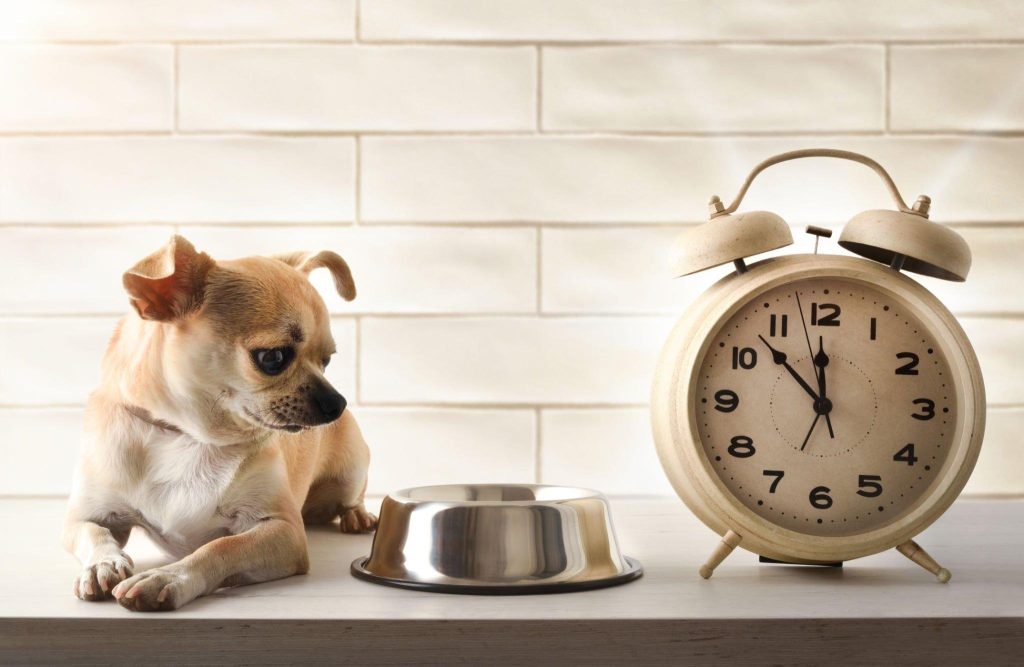
Setting a consistent routine is the linchpin of a successful toilet training endeavor. Puppies thrive on predictability, and a structured routine helps them understand what is expected of them, fostering a sense of security and trust. In this section, we’ll delve into the essentials of establishing a daily routine that facilitates swift toilet training while nurturing a harmonious pet-owner relationship.
Feeding Schedule
- Establishing a regular feeding schedule is crucial as it directly impacts your puppy’s potty schedule. Feed your puppy at the same times every day to encourage consistent potty times.
- Avoid free-feeding (leaving food out all the time) as it makes it difficult to predict when your puppy will need to go.
- Maintain a balanced diet to ensure your puppy’s digestive system is functioning optimally, making toilet training a breeze.
Toilet Breaks
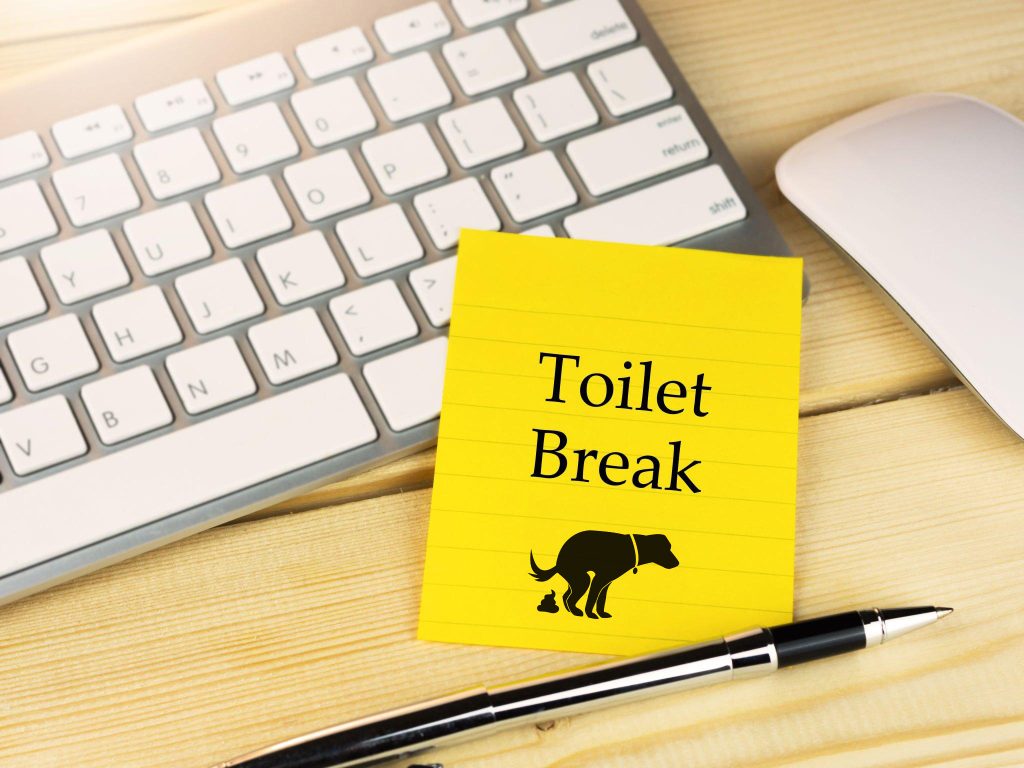
- Frequent toilet breaks are essential, especially for young puppies with small bladders. Initially, you may need to take your puppy out every hour, as well as shortly after meals, playtime, and naps.
- Use a cue phrase like “potty time” each time you take them out. Consistent wording helps your puppy associate the phrase with the action of going to the toilet.
- Be patient and give your puppy some time to do their business. Not all potty breaks will be successful, but consistency is key to success.
Bedtime Routine

- Establish a consistent bedtime routine to help regulate your puppy’s internal clock. A set routine helps your puppy understand when it’s time to sleep and when it’s time for toilet breaks.
- Ensure a final potty break right before bedtime to minimize nighttime accidents.
- Initially, you might need to set alarms for nighttime potty breaks, but as your puppy grows, they will be able to hold it for longer periods.
An effective routine is the cornerstone of successful toilet training. It not only provides a framework for your puppy’s day but also establishes a rhythm that aligns with their natural instincts and bodily functions. By adhering to a well-thought-out routine, you’re setting the stage for a successful 7-day toilet training program, inching closer to a well-trained, confident, and happy pup.
Day 1 to 3: Observation and Prompting
The initial three days are fundamental in setting the stage for successful toilet training. During this period, your primary focus should be on observing your puppy’s behavior and identifying their potty signals. Prompting them towards the designated potty area at the right time is the crux of fostering a good toilet routine. Let’s break down what these crucial days entail:
Observing Potty Signals
- Every puppy has its own set of signals to indicate when they need to relieve themselves. Common signs include sniffing around, circling, whining, or showing restlessness.
- Stay vigilant and observe your puppy’s behavior closely. The sooner you learn to recognize their potty signals, the quicker you can guide them to the designated potty area, reinforcing the correct behavior.
Prompting to the Potty Area
- Whenever you notice your puppy displaying potty signals, promptly guide them to the designated potty area. It’s crucial to act quickly to reinforce the right behavior.
- Use a cheerful, encouraging tone and perhaps a cue phrase like “Let’s go potty” to make this a positive experience. Consistency in your words and actions helps your puppy understand what’s expected.
Maintaining Close Supervision
- During these initial days, it’s vital to keep a close eye on your puppy to prevent accidents and ensure promptness in guiding them to the potty area.
- Consider using a leash or keeping your puppy in a confined area to better monitor their behavior and react swiftly.
Journaling Progress
- Keeping a journal of your puppy’s potty times can be incredibly helpful in understanding their routine and predicting when they’ll need to go next.
- Documenting the times your puppy eats, drinks, and relieves themselves will help you establish a routine that works in sync with their natural rhythms.
Embarking on the 7-day toilet training journey with observation and prompting lays a solid foundation for the days to follow. It’s all about building a connection, understanding your puppy’s cues, and guiding them lovingly towards forming a good potty habit. By the end of day three, you’ll likely notice a budding understanding in your puppy about where the right potty place is, setting a positive tone for the rest of the week.
Day 4 to 5: Positive Reinforcement
As you transition into the mid-week of your 7-day toilet training program, the focus shifts to positive reinforcement. Celebrating your puppy’s successes and guiding them gently through any missteps is crucial for building a lasting potty routine. These two days are about nurturing a positive association with the toilet training process. Here’s how you can go about it:
Rewarding Correct Behavior
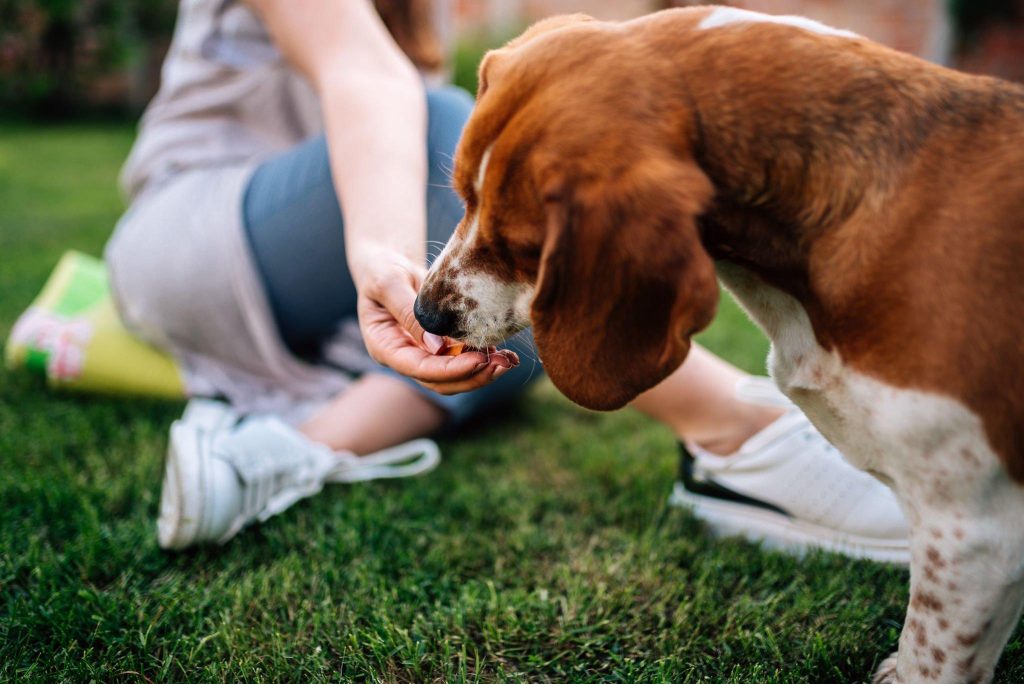
- Every time your puppy successfully does their business in the designated potty area, shower them with praise, affection, or small treats. This positive reinforcement helps your puppy understand they’ve done something right.
- Keep your rewards immediate and enthusiastic. The quicker the reward follows the desired behavior, the better your puppy will understand the connection.
Maintaining a Cheerful Demeanor
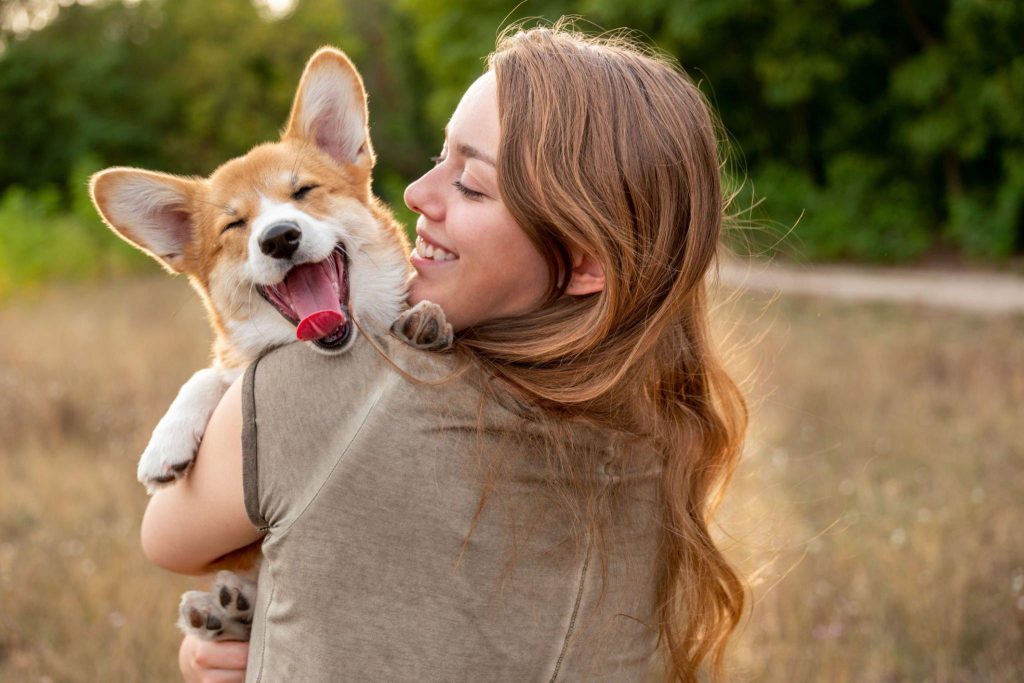
- Stay upbeat and encouraging during potty breaks. Your cheerful demeanor makes a huge difference in how your puppy perceives the toilet training process.
- Use a happy, high-pitched tone to convey your praise. Dogs are very receptive to your tone of voice and will understand your pleasure.
Addressing Accidents Positively
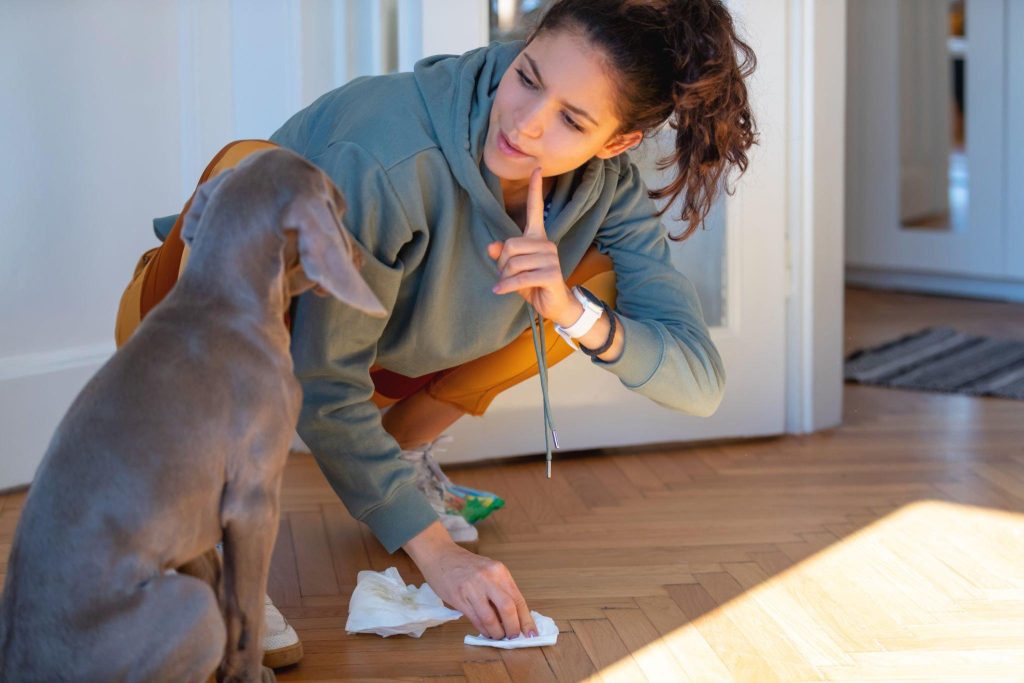
- Accidents are a natural part of the learning process. If an accident occurs, refrain from scolding or showing frustration. Instead, calmly clean up and remember to supervise your puppy more closely to prevent future accidents.
- If you catch your puppy in the act, gently interrupt them and take them to the potty area to finish. Praise them warmly if they do finish in the right area.
Sticking to the Routine

- Continue adhering to the established routine for feeding, toilet breaks, and bedtime. Consistency in routine provides a framework within which your puppy can learn and thrive.
- Record any new observations in your journal to track your puppy’s progress. This data can be instrumental in tweaking your routine for better success.
The crux of Days 4 and 5 is about forming a positive bond between you and your puppy amidst the toilet training journey. Your positive reinforcement, patience, and consistency lay down a solid foundation that paves the way towards the concluding phase of the training. With each successful potty break, you’re not just one step closer to a toilet-trained puppy but also forging a bond of trust and understanding that will last a lifetime.
Day 6 to 7: Gaining Independence
As you approach the tail end of the week-long toilet training journey, it’s time to see the fruits of your diligent efforts. These last two days are centered around gradually allowing your puppy more independence, while still maintaining a watchful eye to ensure they stay on the right track. Here’s how to navigate these crucial days:
Gradual Independence
- Start by allowing your puppy some controlled freedom in a puppy-proofed area. Be present but give them the space to demonstrate their learning by heading towards the designated potty area when the need arises.
- Your puppy’s actions during these moments of freedom will provide valuable insights into how well they have grasped the toilet training lessons.
Reinforcing Good Behavior
- Continue to reinforce your puppy’s correct potty behavior with praise, petting, or treats. Your positive reactions will further cement the right habits.
- Any moment your puppy independently heads to the potty area should be celebrated. It’s a testament to their understanding and your effective training.
Addressing Accidents Constructively
- Should any accidents occur during these days, handle them with patience. Redirect your puppy to the potty area and clean up calmly.
- Remember, scolding can instill fear and confusion. Maintaining a positive, supportive demeanor is key to moving past accidents and towards complete training success.
Reflecting on Progress
- Reflect on your journal entries and observe the progress your puppy has made over the past six days. This reflection will help you identify any remaining challenges and plan how to address them moving forward.
- Adjustments in the routine or additional training might be necessary for some puppies, and that’s perfectly okay. Every puppy learns at their own pace.
The final stretch of the 7-day toilet training program is a rewarding phase where you’ll witness your puppy’s newfound understanding and independence. It’s a significant milestone that sets the stage for a harmonious pet-owner relationship. Remember, the journey may extend beyond a week for some puppies, and continued patience, consistency, and positive reinforcement will lead to eventual success, nurturing a well-trained, confident companion.
Troubleshooting Common Problems
Even with a well-laid plan, you may encounter a few roadblocks on your toilet training journey. It’s essential to approach these challenges with a problem-solving mindset. This section aims to address some common problems and provide practical solutions to keep your training on track:
Accidents Indoors
- Accidents are part of the learning process. Instead of scolding, promptly clean up with an enzyme-based cleaner to eliminate odors that might encourage your puppy to use the same spot again.
- Make a note of when the accident occurred to see if there’s a pattern and adjust your potty break schedule accordingly.
Refusal to Use the Designated Area
- If your puppy is hesitant to use the designated potty area, try placing some of their waste there to mark the spot with their scent.
- Make sure the area is easily accessible, and the surface is appealing to your puppy. Some dogs have a preference for grass, gravel, or concrete.
Distraction During Potty Time
- Puppies are naturally curious and may get distracted during potty breaks. Keep potty time focused by minimizing distractions and using a consistent cue to encourage them to do their business.
- Rewarding your puppy promptly after they’ve relieved themselves can also help reinforce the purpose of potty breaks.
Nighttime Accidents
- Young puppies might have trouble holding it through the night. You may need to set an alarm for a midnight potty break.
- Alternatively, consider using puppy pads for overnight use until they can hold it for longer.
Fear or Anxiety
- If your puppy seems anxious or fearful, it might hinder their toilet training progress. Ensure they feel safe and secure by providing a calm, positive environment.
- If problems persist, consulting a professional dog trainer or a vet to rule out any underlying issues is advisable.
Troubleshooting is a crucial part of the toilet training process. It’s about understanding your puppy’s needs, adjusting your approach when necessary, and providing a supportive environment for them to learn. Remember, patience, consistency, and a positive attitude are your best allies in overcoming the challenges that may arise, ensuring your puppy becomes well-trained and comfortable in their new home.
Beyond the 7-Day Training
The 7-day toilet training program is designed to kickstart your puppy’s potty training journey. However, true mastery might take a little longer. As a responsible pet owner, it’s essential to continue reinforcing good habits and addressing any challenges that come your way. Here’s what you should focus on as you move beyond the initial training week:
Continued Routine
- Maintain the established routine for feeding, potty breaks, and bedtime. A consistent schedule helps your puppy understand what to expect and builds a sense of security.
- Pay attention to any changes in your puppy’s potty behavior, as it may indicate a need to adjust the routine slightly.
Ongoing Positive Reinforcement
- Keep up with the positive reinforcement. Celebrating your puppy’s successes with praise or treats continues to reinforce the desired behavior.
- Look for signs of your puppy signaling when they need to go potty, and reward these communication attempts to encourage this behavior.
Addressing Any Setbacks
- It’s not uncommon for puppies to experience setbacks in their toilet training. If this happens, remain patient, go back to basics, and work through the problem.
- Revisit the troubleshooting tips provided earlier if you encounter recurring issues.
Gradual Transition to More Freedom
- As your puppy becomes more reliable in signaling and going to the potty area independently, gradually increase their freedom around the house.
- Always ensure that the path to the potty area remains clear and accessible to avoid any accidents.
Consulting a Professional if Necessary
- If you face persistent toilet training challenges, don’t hesitate to consult a professional dog trainer. They can provide tailored advice and training techniques to address your puppy’s specific needs.
- Furthermore, consider a vet visit to rule out any potential health issues that could be impacting your puppy’s toilet training progress.
Toilet training is a significant milestone in your puppy’s life, and your consistent efforts will pay off with a well-trained, happy companion. Your journey may extend beyond the 7-day mark, but with patience, understanding, and a sprinkle of love, you and your puppy will get there. The foundation laid during the initial 7-day training will serve as a stepping stone for a harmonious, respectful relationship between you and your furry friend, making the adventure of pet parenthood all the more enjoyable.
Frequently Asked Questions (FAQs)
Navigating the path of toilet training your puppy can spark a multitude of questions. Here are some commonly asked questions and their answers to aid you on this journey:
1. When Can I Start Toilet Training My Puppy?
It’s advisable to begin toilet training when your puppy is between 8 to 12 weeks old. At this age, they are more capable of holding their bladder and have a better understanding of instructions.
2. How Long Does It Typically Take to Toilet Train a Puppy?
While the 7-day training program lays a strong foundation, the total training period may vary from puppy to puppy. Some might grasp the concept in a week, while others might take a few weeks or even months to become fully trained.
3. How Can I Handle Nighttime Potty Training?
During the initial stages, it’s common for puppies to need night time bathroom breaks. You might need to set an alarm for a midnight potty break. As they grow and develop better bladder control, they’ll be able to hold it through the night.
4. What Should I Do If My Puppy Has an Accident?
Stay calm and avoid scolding. Clean up the area thoroughly with an enzyme-based cleaner to remove any lingering odors. Reflect on the circumstances of the accident and consider adjusting your routine to prevent future mishaps.
5. How Can I Tell If My Puppy Needs to Go Potty?
Common signs include sniffing the ground, circling, whining, or scratching at the door. With time, you’ll learn to recognize your puppy’s specific signals and respond promptly to avoid accidents.
Equipping yourself with the right information is a vital step towards successful toilet training. By understanding the intricacies and being prepared for the challenges, you are well on your way to creating a positive toilet training experience for both you and your puppy.
Conclusion
Embarking on the 7-day toilet training journey with your puppy is a rewarding endeavor that lays the foundation for a harmonious pet-owner relationship. The structure and consistency provided during this week play a pivotal role in cultivating a well-behaved furry companion. With patience, understanding, and the right techniques, you’ll navigate through the ups and downs of toilet training, fostering a bond of trust and understanding with your puppy. This process is not just about teaching them where to relieve themselves, but also about communicating and growing together.
Reflecting back on the week, you’ll appreciate the milestones achieved, the challenges overcome, and the joy of witnessing your puppy’s progress. The roadmap provided in this guide is structured to equip you with the necessary tools and knowledge for a successful toilet training experience. As you step beyond the initial 7-day training period, remember that the journey of nurturing a well-trained puppy continues. Your unwavering commitment and love will pave the way for many happy, accident-free days ahead, making the realm of pet parenthood a delightful adventure. Last but not the lease, if you liked this article, we are sure you’ll enjoy rest of the articles on our blog.


